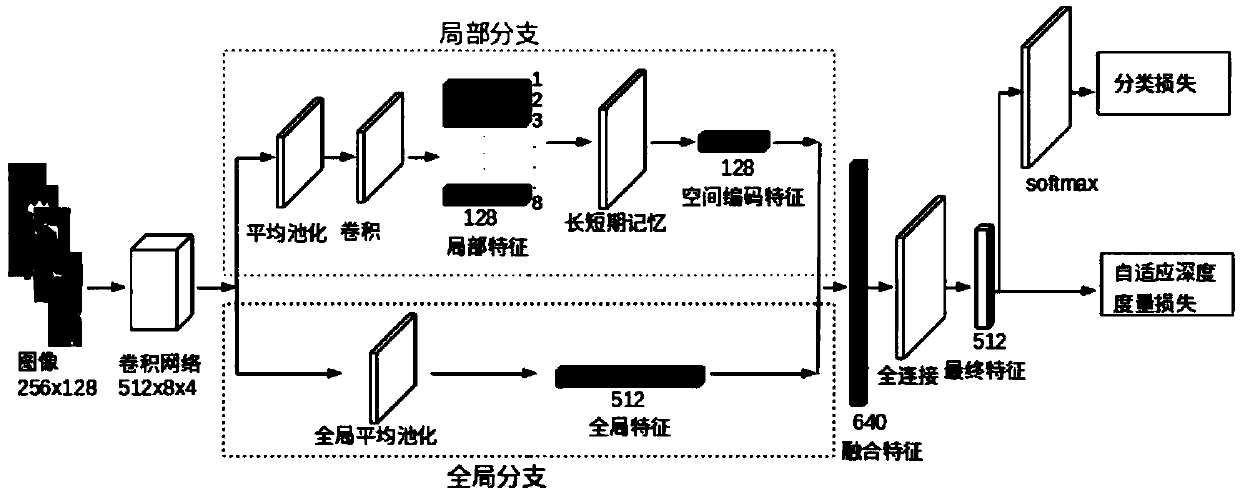Covered pedestrian re-identification method based on adaptive deep metric learning
A technology of pedestrian re-identification and metric learning, applied in the field of occluded pedestrian re-identification, which can solve the problem of not considering the spatial structure relationship of pedestrian images.
- Summary
- Abstract
- Description
- Claims
- Application Information
AI Technical Summary
Problems solved by technology
Method used
Image
Examples
Embodiment Construction
[0050] Below in conjunction with accompanying drawing and embodiment the method of the present invention is described in detail, present embodiment is carried out under the premise of technical scheme of the present invention, has provided embodiment and specific operation process, but protection scope of the present invention is not limited to following the embodiment.
[0051] see figure 1 , the implementation of the embodiment of the present invention includes the following steps:
[0052] 1. Design a convolutional neural network structure that is robust to occlusion. The network consists of two partial networks. The first part of the network is used to extract the middle and low-level semantic features of pedestrian images, and the second part of the network is used to extract high-level semantic features of pedestrian images.
[0053] A1. The first part of the network is a fully convolutional network with an input image size of 256×128, which is used to extract middle ...
PUM
 Login to View More
Login to View More Abstract
Description
Claims
Application Information
 Login to View More
Login to View More - R&D
- Intellectual Property
- Life Sciences
- Materials
- Tech Scout
- Unparalleled Data Quality
- Higher Quality Content
- 60% Fewer Hallucinations
Browse by: Latest US Patents, China's latest patents, Technical Efficacy Thesaurus, Application Domain, Technology Topic, Popular Technical Reports.
© 2025 PatSnap. All rights reserved.Legal|Privacy policy|Modern Slavery Act Transparency Statement|Sitemap|About US| Contact US: help@patsnap.com



